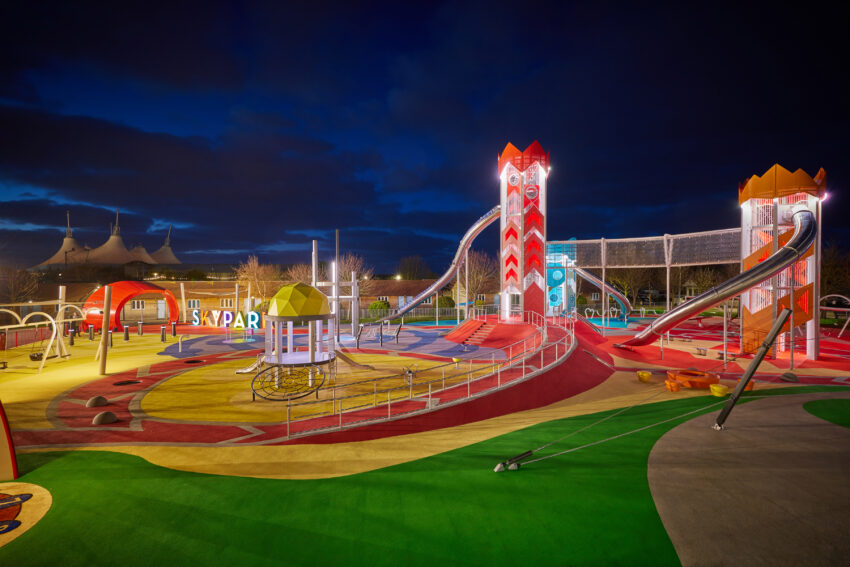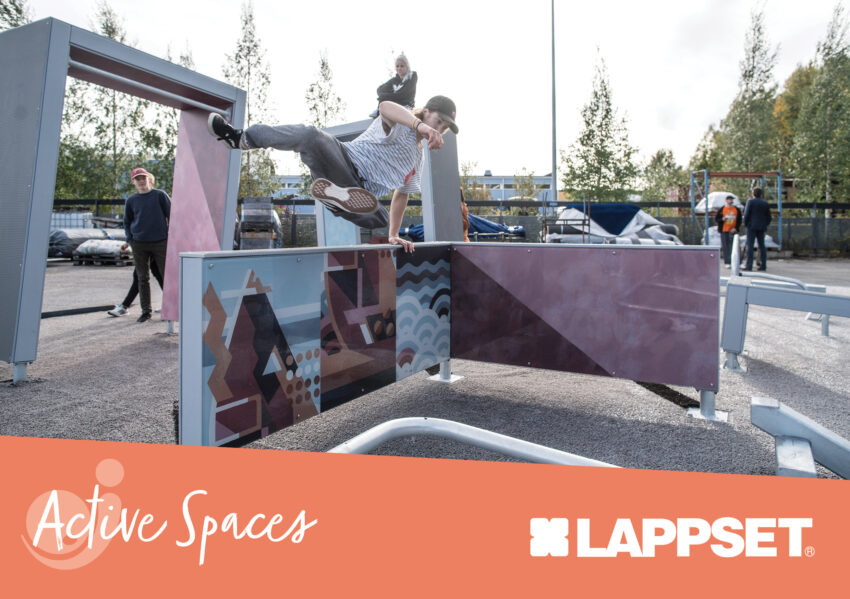
Cantley Park Interactive Play Space
CANTLEY PARK INTERACTIVE PLAY SPACE CANTLEY PARK INTERACTIVE PLAY SPACE THE BRIEF: The council was committed to creating a new destination play area on site

It turns out that risky play may be exactly what today’s children are missing.
Often our favourite childhood memories involved being outside, unsupervised, whilst hanging out with our friends. Sadly, today’s children spend far less time playing outdoors than their parents did. This disconnect is further evidenced by academic papers from the 1990s which suggest that children’s “roaming radius” from home had shrunk by 90% in 30 years.
Children’s lives are very different today than they were 20/30 years ago because of a variety of rules, interventions and changes in how children play and socialise. The once commonplace elements of informal challenge and risk have been generally removed from their day to day lives. Including risk and challenge in play allows us to manufacture situations in which they will test their nerve and skills without putting themselves in danger of considerable damage or injury. Risk and challenge sit as one of the core principles of play and without this children’s engagement and enjoyment of a play area would be limited.
Risky play in early childhood can help children to develop their self-confidence, resilience and even risk-management skills. Brussoni’s work in injury prevention research shows that engaging in risky play can actually reduce the risk of injury, too.
Mariana Brussoni, a professor at the University of British Columbia and BC Children’s Hospital — featured in The Nature of Things documentary The Power of Play — has spent years researching the benefits of play that have an element of risk. Risky Play for children, she explains, is “thrilling and exciting play where children engage in risk without certainty,” and it has been proven to have immense benefits.
Many UK playgrounds are designed using what is called the “KFC” (Kit, Fence and Carpet) approach. This style of design tends to feature a few elements of play equipment, a dog-proof fence and a soft surface to run and fall on. This approach to playground design is often stale and creates identikit play spaces, which are ultimately less fun for children to play, explore and it doesn’t teach them about pushing their limits and getting that “butterfly” feeling.
Jupiter Play believes that the key to a great play space is to find a good balance between providing a safe environment and offering equipment within this that sufficiently tests children. There is a range of factors to consider around risk, namely and principally not allowing for risk to become danger. Other considerations are around how to create risk for younger children and also children with different abilities. Every single person that uses a play area is entitled to play and a huge part of that is risk; with that in mind understanding user needs and abilities is vital to give a varied and all-inclusive approach.

CANTLEY PARK INTERACTIVE PLAY SPACE CANTLEY PARK INTERACTIVE PLAY SPACE THE BRIEF: The council was committed to creating a new destination play area on site

Promoting Inclusivity in Public Parks and Outdoor Spaces A Call to our Clients In the realm of outdoor play and recreation, a profound shift in

Introducing the UK’s most exciting playground… Jupiter Play & Leisure are delighted to have partnered with renowned holiday destination Butlin’s to design and

It is essential, now more than ever, to stay current on what trends are driving the future of play. Play is integral not only to

DESIGNING DASH PARKOUR: A HOLISTIC R&D-PROJECT Design is an empathic way of thinking and working, and in our field, designer is the cross-field intermediary who

Landscape designer Arja Paula speaks about aspects to consider when designing a Senior park. I prefer the term senior park because it is more of
Nottingham
The Coach House
2 North Road
West Bridgford
NG2 7NH
Edinburgh
9 Ainslie Place
Edinburgh
EH3 6AT
Sign up to our newsletter to keep up to date with all things play and innovation.
Accreditations







The Coach House
2 North Road
West Bridgford
NG2 7NH
9 Ainslie Place
Edinburgh
EH3 6AT
Sign up to our newsletter to keep up to date with all things play and innovation.
The Coach House
2 North Road
West Bridgford
NG2 7NH
9 Ainslie Place
Edinburgh
EH3 6AT
Sign up to our newsletter to keep up to date with all things play and innovation.